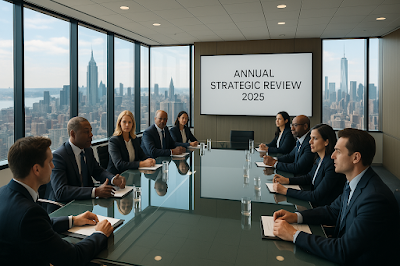While I was studying corporate finance few years ago, I encountered the concept of risk-free rates: the theoretical return on an investment with zero risk of financial loss. It plays a foundational role in models such as CAPM and is at the core of how investment banks and corporate finance teams estimate the cost of equity. However, in reality, no asset is truly risk-free
This post will
act as a critique to traditional methods used to calculate risk-free rates.
This post aims to challenge some of the traditional methods used to estimate
risk-free rates, particularly those commonly accepted in academic exercises and
early-stage financial analysis. This is not an attempt to label all
methodologies as flawed, but rather to shed light on their limitations of
academic practices and propose a different perspective.
To frame this critique, let us understand a concept from the
military history called the victory disease. Victory disease is a military term used for
ancient armies who gain arrogance and complacency due to repeated triumphs,
ultimately leading to irreversible downfall. During the French invasion of
Russia in 1812, repeated victories convinced Napolean Bonaparte that his army
is undefeatable. With this clouded judgement, Napolean sent 610,000 soldiers to
annex Russia. However, Russians were well-prepared with superior tactics and
weapons, leading to only 10,000 French soldiers returning alive. This is not
just a single instance. History is replete with multiple such encounters.
However, this is not merely restricted to history. The hubris of being infallible
still exists with many developed economies and is often integrated in the way
risk-free rates are computed.
The
centrality of the risk-free rate is evident in its indispensable role across
the most influential models in finance, especially in the Capital Asset Pricing
Model (CAPM). Despite its theoretical relevance, every investment, despite
being highly secure, carries at least a minuscule amount of risk. This exposes
a fundamental void between the excel sheet models and the real world they seek
to describe. To bridge this gap, the industry has adopted the use of
government-issued securities from stable, developed economies as a proxy for
the risk-free rate. For instance, the
yield to maturity on a US Treasury bond, is widely accepted as the proxy for
the risk-free rate in US dollars. However, a rigorous examination reveals that
these instruments are subject to an array of risks that are overlooked in
standard financial analysis.
We have accepted government-issued bonds from “safe”
economies as proxies. But there are critiques to it.
1.
United States
Proxy used: 10-year
US T note
Critique: Can artificially inflate bond price in case the Fed choose to conduct Quantitative easing programs.
2. Eurozone
Proxy used: 10-year
German bund rate
Critique: In case of an economic crisis in a single country, Germany’s bond yields will be pulled down by safe-haven demand, making them look safer than they are. The idea of uniform economic safety across the Eurozone is not real.
3. United
Kingdom
Proxy used: 10-year
gilt
Critique: Yields heavily influenced by the Bank of England's QE programs, making them more reflective of monetary policy, rather than market fundamentals.
4. Japan
Proxy used: 10-year
Japanese government bond
Critique: Yields have been shaped by decades of extreme monetary policy intervention, including yield curve control, disconnecting them from finance fundamentals.
5. China
Proxy used: 10-Year
Chinese Government Bond
Critique: China's government bond yields are not purely market-driven as they are managed through central bank guidance and a controlled financial system.
These are
politically stable governments but let us not confuse political credibility
with economic soundness. Central banks can and do manipulate these yields for
monetary or fiscal goals, often distorting them.
Even if default risk is close to zero, several other risks
persist
1.
Inflation risks: Nominal yields say
nothing about real returns. A government can pay you back in full and still
erode your purchasing power through expansionary monetary policy
2.
Reinvestment risks: Most bonds pay
coupons. But unless you reinvest those at the same rate, which is highly unlikely
in these volatile markets, realized return does deviate from its yield-to-maturity.
With this,
investors need to adopt newer methodologies to fix this issue.
Instead of
ignoring the risks in the baseline rate, analysts should quantify the potential
risks such as default, inflation, liquidity, and policy risks and embed it in a
chosen government bond proxy
Furthermore,
they can employ a wide range of risk-free rates in their models to conduct
sensitivity and scenario analysis across wide spectrum of risk conditions.
With changing dynamics of the financial industry, it becomes imperative for us to rework on the computational mechanisms for risk-free rates by introducing range of risks, which are not yet in everybody’s perception.









